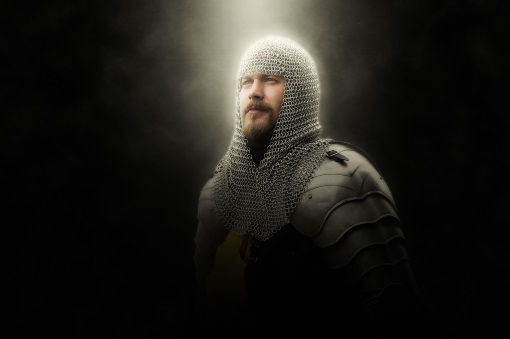
The Knight in shining armor, chivalrous to the very end. The majestic charger of gilded plate barding, galloping forever onward like a divine wind. The wielder of powerful, enchanted arms as the bane of the unjust and unholy. Unwavering devotion to their cause as the defender of the weak, and the usurper of the vile.
I didn’t say his name, but he popped up in your head, didn’t he?
They are the knight-gallant; the righteous crusader; the legendary paladin; the holy warrior.
And they are both a treat and chore to write.
Donning gilded plate and chain, and brandishing a shining sword is a surefire way to catch some attention. Having the charm to back those aesthetics up? Well, you’ve got yourself a starter-kit Prince Charming.
Problem is, few look past the magnificent armaments and shining plates they don. Let us delve a little deeper into the knight beneath the shining armor.
I’ve Got a Niche!
The holy warrior is much more than the most dashing soldier on the battlefield. He is beyond his magical items. Given that many myths of magical weapons like Excalibur or Mjolnir require the bearer or wielder be of exquisite character, for what worth would such powerful artifacts be in the hands of the average Joe?
Few make the cut for this job.
Knighthood was not granted to every man willing to pledge his sword in service to his King. Neither was priesthood granted to every man who read the Bible. Both Priest and Knight served a purpose in society beyond their skillset; one interpreting the will and word of his deity and preaching it to the masses, while simultaneously warding them against sinister influences of evil; the other defending the citizens of the realm, and bringing destruction to those who came into the cross-hairs of the Crown.
The priest offered spiritual guidance and protection, acting as a ward against corrupting vices and influences to his flock. The knight offered physical protection to his realm with his militaristic knowledge and combat prowess. The celebrities of olden times were the knights of fables, and the best mentors were the clergy. They were the guiding lights that shaped the lifestyles, goals, and ambitions of the people. They were revered in ways we might not completely understand by today’s views, for they operated in a different caste system than we do today. Their places in society were clearly defined, as opposed to today, where the whole “anyone can be anything and it isn’t exactly taboo” defines our societal expectations.
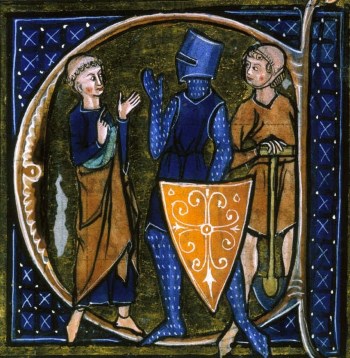
But whereas a Knight served his King and his commands, a priest also had rules and belonged to a hierarchical order. The modern, almost pop-culture-esque, concept of a paladin or holy warrior comes from mashing these two roles in society into one: A Knight who served his God or Church instead of his Lord; A priest who may offer more than just spiritual protection by shedding blood in defense of his flock. Throw in some magic, and you’re ready to rock and roll.
A Historical Legacy
Paladin is derived from the Roman Palatine, which denoted a high-ranking government official who once served on Palatine Hill. From there, it diverged into a multitude of titles across Europe that signified some sort of government official or honor guard of said official. The political element of the Paladin is strengthened from the origins of its own word.
A more historical view of a Paladin is brought to us from the Song of Roland, the epic poem revolving around one of Charlemagne’s closest and greatest knights. The whole epic sprouted from his heroic yet tragic stand against all odds where he died in an ambush against a large host of Muslim warriors. It must have been a truly heroic act seeing as Roland is mentioned in numerous tales from all across Europe from many different centuries, not to mention many places are named after him. If you read the epic, you will see many similarities between Roland and Tolkien’s Boromir. Talk about legacy!
The Song of Roland romanticized the standard for what it means to live up to European virtues of honor, bravery, and duty to one’s people. The very concepts of Arthurian Chivalry echo in the epic, and I would consider both to be crucial to the development of western civilization as a whole, but also an enduring guide of what a righteous man ought to be.
As far as the concept of a paladin goes from human history, Roland was one of twelve paladins who served Charlemagne as his closest advisors and revered as his greatest warriors. So, not only were paladins cut from the same cloth of the Arthurian Knights of the Round Table, but we also get a glimpse of their political authority as close advisors and agents to the most powerful man in Europe at the time.
Doesn’t really ring the same as the modern view of a Paladin as a holy warrior, does it?
What the modern, fantasy concept of a Paladin resembles the most is a member of one of the numerous monastic holy orders forged during the Crusades. They were the closest historical emulation of our modern idea of a warrior priest that we can use as a basis of inspiration to write from. Does that mean that every crusader was a paladin? No. Not every man who answered the call of the Crusades was a knighted man or a man belonging to any monastic order. Many were commoners.

So, from a historical viewpoint, a Paladin would be an agent with some militaristic background that had a valid claim to a hierarchical position or status in society. Said man more than likely had some sort of stake in the political pot and/or belonged to a holy order of his church.
Ultimately, what we have here is the heroic myth version of our holy warrior. The paragon of righteousness in black and white tales. The epitome of the good, in the struggle of good and evil.
But what happens when we transplant this heroic character into a more contemporary gray setting?
Ned Stark comes to mind.
The Wielder of Light
Now for some fantasy.
Our modern, Dungeons and Dragons view of the Paladin is what I particularly find fascinating. Something about being able to conjure the wrath of God or the Sun in the palms of your hands just screams badass. Being the bulwark against a tide of undead or demon horde feeds that childhood awe captured by the heroic myths of olden times.
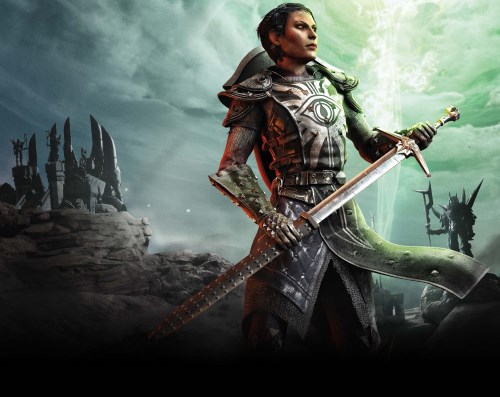
Admittedly, I spent way too much time in my teenage years absolutely dominating Azeroth with my Paladin in World of Warcraft, so I may be a tad biased.
Modern interpretations of the holy warrior fit the description of the priest-knight. The heavily clad bastion of steel with the righteous blade or devastating maul that saves the day when the hour is the darkest. Come to think of it, they’re practically a Deus Ex Machina in plate and chain.
And that’s what we want to avoid.
As much fun as it was flinging lightforged hammers out of thin air at my enemy’s faces, I still like to preach realism here at Mythic Scribes. Having overpowered characters, in any medium, can ruin any suspense you build with your audience. What fun is it to follow around a character if he or she has the Godlike ability to overcome any obstacle or enemy?
Here are two suggestions:
One, take after the grandiose scale of Warhammer 40,000, and make the opposition equally as powerful or even more terrible in their unique ways. You keep your suspense high while your characters retain incredible powers, because the baddies are also extremely deadly. So, you have the psychic ability to cleave your enemies in half around you? Cool. We can throw a planet at you, teleport moons with gravity manipulating cannons to your world, or open a rift into the void and have a sea of horrible daemons devour your planet.
Another, have their awe-inspiring powers cost your characters. Magical abilities that cost a bit of your sanity, soul, or senses? Seems fair for such a gift. A great example of this is Lord Beric Dondarrion of A Song of Ice and Fire, who is resurrected after numerous deaths by his comrade-in-arms Thoros of Myr. Each time he is brought back to life, he loses a bit of himself. Whether it is an eye that didn’t grow back after a gruesome death or the loss of his memory each time he is brought from the brink, it costs Lord Beric a mighty toll to continue on in the realm of the living. At least he retains the ability to ignite his sword.
Everyone loves a fiery sword.
A Chink in the Armor
Now that we have gone over their purpose and background, we can dive right into creating who is beneath the armor.
Again, looking back to the Song of Roland, Roland is raised in poverty even though he is the nephew of Charlemagne. His mother was disowned from Charlemagne, but Roland won back his mother’s family after numerous attempts to feed her as she lied sickly on the bed by stealing food from Charlemagne’s court. The King admired the young Roland’s determination and fire, and eventually learned of his family ties from the young boy. Stricken with grief that his sister had befallen such a horrible life after her husband was killed, he made sure neither she nor his nephew ever so much as went hungry again.
Roland then trained to be a great warrior, his inner fire growing ever greater as he grew older and bolder. Eventually, he made his way into his Uncle’s court of Paladins, his trusted advisors, and became one of his King’s greatest agents. Eventually, he dies fending off an entire army with but his most trusted comrades in a feat of superhuman endurance and strength.
Again, here we see the classic heroic myth executed. Do the right thing, get rewarded. The triumph of an iron will over staggering odds. It seems the impoverished boy rising to accomplish great achievements trope is a little older than contemporary literature.
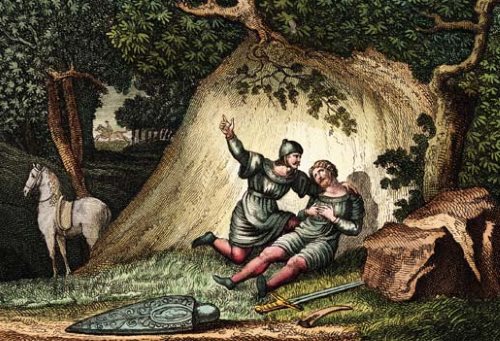
Speaking of contemporary literature, in order to really sell these characters to readers today, you’re going to have to make them a little less black and white. One of the biggest pitfalls with writing or even acting/roleplaying as a Paladin is that they tend to be very one-dimensional characters. Knights of old and even the monastic orders were not wholly good and indeed committed grim acts; they still succumbed to being human. How long can your Paladin stay the course through whatever you choose to throw at him? Does he or she capitulate to their innermost desires or external temptations?
These characters require an iron will to walk the narrow line their lifestyles dictate. What happens when they snap? What happens when they are given impossible choices?
An example of this is in Warcraft III during the great plague of undeath when Arthas Menethil, Crown Prince of Lordaeron and Knight of the Silver Hand, is given two choices at the gates of Stratholme. He knows nearly if not the entire population of the city has been infected with the plague, and soon its citizens would become a ravenous army of zombies. Either he commits his forces to trying to save an uncertain percentage of the populous that might not be affected, or he purges the entire city and risks no further turning. He chooses the latter, to the disgust of half of his Order, dear mentor Uther, and love Jaina. They refuse him, and Arthas continues onward into the city with those who stayed loyal to him to cull the populace. The Knights of the Silver Hand are disbanded and form two different factions after the split. Arthas then eventually becomes one of the greatest villains of the Warcraft universe.
How well would your character’s resolve hold after slaughtering potential innocents in order to save them from a fate worse than death?
These no-win scenarios forge harder, more believable characters because they create the chinks in the armor that isn’t metal: Their mental armor. Put yourself into their sabatons. How would you be after that? Would you be scarred? Would it feed something more sinister inside of you?
What would it be like to be a man among the ruins?
A Fine Line: Heretic or Fanatic?
One of the cornerstones of a Paladin is devotion to his or her cause. That cause may be the word of a God, King, or Prophet. It may be an ideology. It might be their own self-determined will-to-power. They live and breathe for their cause, for in it they find their purpose in life. Without this driving force that calls them to fulfill their duty, they are nothing.
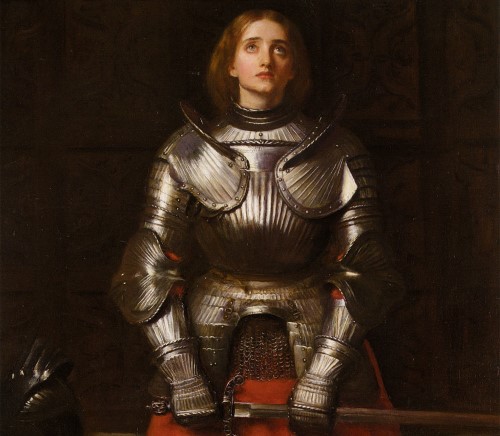
Up to this point we have assumed our characters are level-headed, or at the least, one would assume being a person of political significance would have their head screwed on somewhat straight (you can tell I spend too much time enjoying fantasy). But what happens when you give this power to someone who has a few screws loose? What if they are extremely gullible and lead down a dangerous path they believe to be a righteous one?
What if they have been lied to?
I see a primary function of Paladins as seekers of truth and upholders of righteousness. But who controls the truth? Who deems what is heretical in their society?
During the events of Halo 2, the great Covenant, a massive host of different alien species and civilizations led by a panel of “prophets” discover a dissenting faction had separated from the Covenant following the events of the destruction of the Halo ring, Installation 04. They are deemed heretics and ordered to be dealt with by, oddly enough, Thel ‘Vadam the Arbiter – who was also declared a heretic for failing to defend the Halo ring from destruction.
The heretical leader Sesa ‘Refumee actually learns the truth of the Halo rings, that they are intergalactic genocidal superweapons, and in turn learns the truth of the great lie the prophets were preaching to the Covenant. The heretic leader knows the Prophets are false, and are leading the Covenant to its doom. He tries to convert as many of his kind as possible, but he is eventually slain by the Arbiter, who would learn the truth much more painfully as events unfolded as the story progressed.
The Arbiter acted upon a perceived truth that was fed to him unawares of its malicious intent. He carried out the treacherous Prophets’ orders with adamantine determination to earn his honor back, though the Prophets never intended on returning it to him, even if he died for them. The Arbiter would eventually destroy those who lied to him and his peoples with a truly righteous wrath.
Those who control information and push certain viewpoints can control the views and morality of the innocent masses, direct the flow of cultures, and shape society; whether the controller is a King, a church, or a broadcasting station. Living a good life is hard enough for any man, but it is a dangerous path for someone whose guard is down and their mind unawares to sinister influences disguised as virtue.
“The road to Hell is paved with good intentions” comes to mind.
On the flipside, what if they see truth in a perspective that goes against popular belief of the time? What happens when the golem wakes from its naïve slumber?
Is your character wise enough to see through a sinister plot in his Order or society, and is he brave enough to challenge it, even though it may make him a heretic to a cause he has devoted his life towards?
How does this character react when his society indulges in everything he stands against, and he himself must conceal who he is in order to skirt around the degeneracy and wickedness of a collapsing civilization? I would imagine such a man would have troubles in concealing the truth of his identity in such a world. Does he follow along to get along, breaking his own moral code to survive and surf the times? Or does he fight?
Does he fall prey and spiral into extremism like the Faith Militant led by the High Sparrow in A Song of Ice and Fire?
How does a court Paladin follow a murdered or usurped King, considering his neck would also be on the chopping block for not even so much as believing in what the King did, but by merely serving him so closely? Following allegiances to dead men and women is about half the story of A Song of Ice and Fire, and we can see how the characters struggle to uphold those oaths as the plot gets out of hand.
Paladins have a unique predisposition to becoming tragic characters, for the righteous path is the hardest to tread. This is how you transplant a more polarized, black and white character into a contemporary atmosphere. When doing the right thing results in your death or exile instead of honor and reward, how does one cope with the righteous lifestyle?
These characters face many battles, both physical and mental. How well will yours toe the line?
Further Discussion
Who is your favorite Holy Warrior in the fantasy genre? What makes this character special?


In your opinion, does the literary antithesis of a paladin exist and if so, could you give an example?
Good question, Chris.
In the Dungeons and Dragons fashion, yes.
In a broader sense, no.
The D&D antithesis to a Paladin, or evil’s answer to the paladin, is a blackguard. Basically a negative version of the holy warrior – an unholy one. Practically the same in all aspects except for the causes/deities they serve. Even a blackguard will have an unwavering conviction to see his will brought to fruition.
So, even in that medium, they aren’t quite antithetical. What is antithetical to The paladin is a case by case basis, considering their ideology, religion, or other motivating factors.
An easy answer would be “anything completely evil” but that’s a lame answer because, simply, nothing is ever truly evil in every sense. Nor should you be writing characters that are evil just for evil’s sake. Evil is a viewpoint, a perspective.
The closest you can get to a complete opposite in my mind would be something that is devoid of conscience; a zombie, if you will. Something that only exists to consume and fulfill primal urges and hungers with no direction like a parasite. Or mindless lackeys being controlled like a puppet by a superior hivemind.
I would say the antithesis to a paladin is something akin to the white walkers in ASoIaF. They seem to have no aims other than the complete and total destruction of the living world by any means necessary. Death incarnate.
Thanks for the very astute, well thought out answer. Great advice and much to ponder.
Do you think that a Green Lantern would qualify as a paladin? They have many of the same attributes.
Absolutely.
Wielding powerful rings that manifest light for whatever it’s user needs? The Green Lantern Oath? Definitely echoes paladin sentiments.
I alluded that an alien fits the bill in this article, which challenges the original perceived goody-two-shoes in glowing plate and chain.
My favourite paladin in fantasy literature would be Paksenarrion Dorthansdotter from the books by Elizabeth Moon. In that setting paladins are chosen by the gods, and the gods choose to grant the paladins power depending on what the paladin needs it for. The paladins are also portrayed as wholly devoted to their gods, which causes some interesting issues for them.
I’ve drawn a lot on this for designing the paladins in my own setting.
The other source of inspiration I’ve used is the Inquisitor from the Warhammer 40k setting (particularly Gregor Eisenhorn). In a way the inquisitors can be seen as a kind of paladin, although darker in nature than perhaps a “regular” paladin is intended to be.
I’m going to have to check those books out. My Paladins operate in a similar manner.
The Inquisition definitely has their, erm, quirks and violent tendencies. I did want to go into how fanatic they are in this article, and they sure are a great source of grimdark inspiration.
Also, especially when speaking about the Inquisition, I think it shows how dark you can get with a character who fits the role of a paladin.
A do-what-needs-to-be-done attitude like that can put someone in some morally compromising situations.
My apologies. I didn’t see the responses here in time. You’re right I think, the conflict between doing what needs doing, and what’s “right” can put a character in some really interesting situations.
I need my paladin in the story I’m working on to face a kind of trial of faith at one point. There are a lot of options, but it’s tricky to find one that’s interesting, that suits the format of the story, and that doesn’t cause a multitude of new story arcs to spawn.